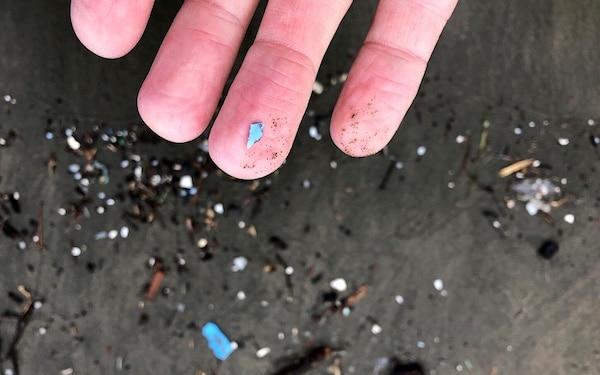Microplastics have infiltrated every environment on Earth, and contamination from this pollution is projected to worsen.
According to a new study published in the journal Science, microplastic pollution could more than double by 2040, highlighting the urgent need for regulations.
This review, which encompasses over 20 years of research on microplastics, emphasizes the necessity for global action to address the spread of these tiny plastic particles.
“Environmental contamination could double by 2040 and widespread harm has been predicted,” the researchers noted in the paper.
“Twenty years after the first publication using the term microplastics, we review current understanding, refine definitions, and consider future prospects,” they added.
Dive deeper
Microplastics are small plastic particles, usually measuring less than 5 millimeters, that come from the degradation of larger plastic products or are intentionally created for industrial purposes. It is estimated that approximately 40 megatons of microplastics are released annually.
These particles have been found in diverse environments globally, including oceans, rivers, soil, tap water, food, animals, the air we breathe, and even within the human body. Their minuscule size makes them extremely difficult to eliminate from the environment, and they have the potential to accumulate in food chains.
“Everywhere we look, we have found plastics. From remote locations across the globe to the inside our own bodies, plastics have been identified,” said Joel Rindelaub, a senior lecturer at the University of Auckland.
“Plastic pollution doesn’t really disappear; it just breaks down into smaller and smaller pieces. While research into environmental plastic pollution is still ongoing, one thing remains clear: plastics are here and they are here to stay,” he added.
The full impact of microplastic exposure on human health is not yet fully understood, but existing studies have already identified harmful effects, including respiratory problems, disruption of gut microbiota, endocrine disruption, and toxicity from chemicals linked to microplastics.
In the paper, the scientists emphasize the current research on microplastics, their sources, and their impacts, while proposing strategies to address this significant pollution issue. They highlight the need for improved sampling methods and more precise categorization of microplastics to facilitate effective regulation.
The experts argue for a multi-disciplinary approach to regulation under the upcoming Global Plastics Treaty. Set to enter its fifth round of discussions in November, this treaty presents a crucial opportunity for international collaboration against microplastics. The researchers point out that while minimizing the release of microplastics is important, it is also essential to reduce overall plastic production to avoid “a high risk of irreversible environmental damage.”

